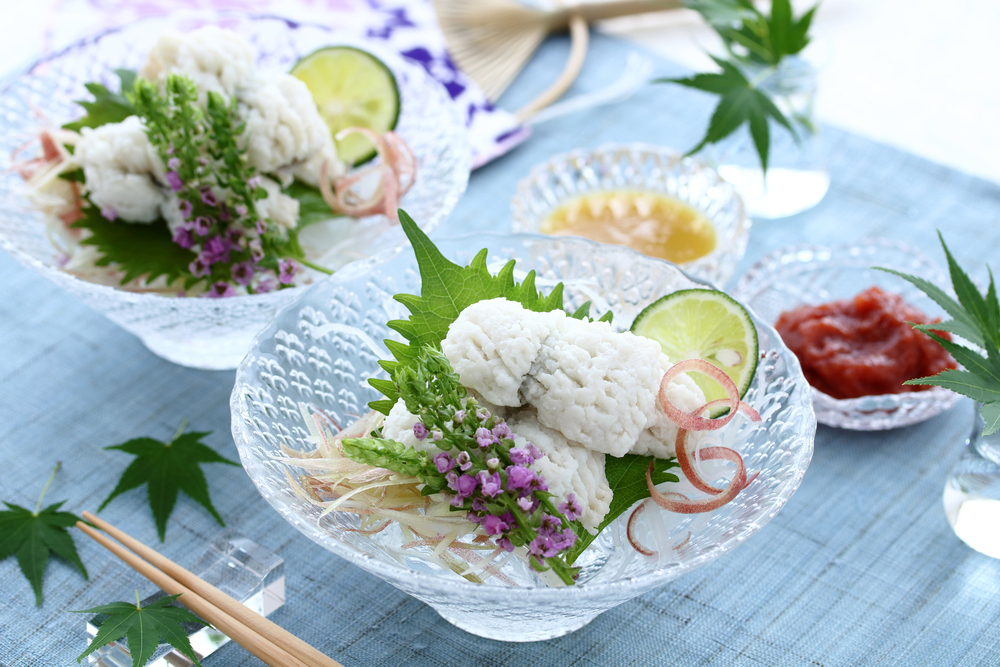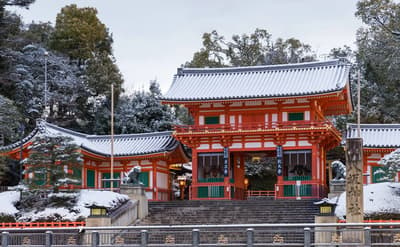If you are going to go sightseeing, you want to incorporate into your itinerary things that you can only see and experience during that time of the year. In this issue, we will introduce the situation, events, and recommended spots in June in Kyoto for those who are interested in such things.
About Kyoto in June

June in Kyoto is the rainy season in Japan. Although you may be disappointed when it rains during your trip, you will be glad to know that the atmosphere of temples and shrines on rainy days is fantastic and you can enjoy more Japanese-style scenery. Also, since many people come to Kyoto to avoid the rainy season, the crowds are relatively calm in June, and you can enjoy sightseeing at your leisure.
Atmospheric temperature
Temperatures in Kyoto in June average between 20 and 28 degrees Celsius. It is characterized by high humidity and muggy weather with many days feeling damp and hot. Daytime temperatures can be relatively high, but rainfall can make it feel a bit cooler.
Events
Several cultural events and festivals take place in Kyoto in June. Of particular note are festivals related to hydrangeas, which are in full bloom in June. Other interesting experiences include the Japanese custom of “Natsukoshi-no-harae,” or “purification of the summer passover,” which is held at many shrines.
Travel
When traveling to Kyoto in June, it is necessary to always have rain gear on hand. Despite the rain, Kyoto’s gardens and temples are enhanced by the beauty of the greenery that the rain brings. Temples with particularly beautiful moss, such as Saiho-ji Temple (Koke-dera), are more attractive when visited during the rainy season. This is also a good time to visit if you want to avoid the crowds, as you can take your time to explore the sights during this time of year when the crowds are smaller.
June Fashion
June in Kyoto is humid and rainy, so light, quick-drying clothing is appropriate. A raincoat and folding umbrella are essential items. It is also advisable to wear non-slip shoes or waterproof sandals. It is also a good idea to have a hat and sunglasses for when the sun comes out. With colorful rain gear, you can enjoy fashion even during the rainy season.
Best time to see them is in June! A spot with beautiful hydrangeas
Hydrangeas are very popular flowers in Japan. In Japan, hydrangeas are also called “rain flowers” because they often bloom during the rainy rainy season, and are considered a symbol of the rainy season. They have been depicted in many literary works and paintings since ancient times, and can be said to be a flower deeply rooted in Japanese culture.
Shrines and temples are also filled with hydrangeas, and some of them hold “hydrangea festivals” during the season. The collaboration of historical places and hydrangeas is fantastic and beautiful, and will become one of the unforgettable sceneries of Japan.
Mimuroto-ji Temple(三室戸寺)

Mimuroto-ji Temple in Uji City is famous as a flower temple because of the variety of flowers that can be enjoyed throughout the four seasons. Various flowers such as azaleas, lotuses, and rhododendrons are in full bloom, and hydrangeas are especially famous. It is also known as “Ajisai-dera” (temple of hydrangea).
During the hydrangea blooming season, the “Hydrangea Garden” is open, where visitors can admire about 10,000 colorful flowers of about 50 species. Recently, heart-shaped hydrangeas have become a hot topic. The location of the blooming area seems to be different every year, so it is fun to look for them as if you were on a treasure hunt. The hydrangea garden is also illuminated on Saturdays and Sundays only.
Yoshimine-dera Temple (善峯寺)

At the “Hakusan Hydrangea Garden” of Yoshimine-dera Temple, hydrangeas bloom all over the slope. From the hilltop, you can see the whole city of Kyoto over the hydrangeas, making it a famous spot with a spectacular view. The best time to see the hydrangeas is when it rains a lot, but the sight of the hydrangeas floating in the mist is fantastic. Even in the rain, this is a must-see spot.
The precincts of the temple are also home to satsuki (Japanese azalea) flowers, which are at their best at the same time as the hydrangeas, so it is recommended to take pictures of hydrangeas and satsuki flowers with a great view of Kyoto city.
Sanzen-in Temple (三千院)

Sanzen-in Temple holds a hydrangea festival every year around mid-June. During the season, the garden is decorated with about 1,000 hydrangeas of various kinds. Sanzen-in Temple is also known for its moss, and hydrangeas and moss are at their best around the same time. The collaboration of hydrangea and moss, which can only be seen at this time of the year, is worth seeing.
Shrines to visit for “Nagoshi-no-harae” (summer purification rites) for good health in mind and body

Nagoshi-no-harae is the custom of Shinto shrines to purify the body and soul from defilement and various sins and mistakes that cause misfortune and calamity. Purification takes place twice a year, in June and December, with the Nagoshi-no-harae in June, exactly halfway through the year.
Those who participate can purify themselves of sins and impurities of the past six months and wish to remain pure for the remaining six months of the year. The main way to purify oneself is to go through a large circle called “Chi-no-wa”. This is one of the most typical Japanese customs, and we encourage you to participate.
The etiquette of Nagoshi-no-harae differs from shrine to shrine. Please follow the rules of each shrine.
Kitano-Tenmangu Shrine (北野天満宮)
During the summer purification ceremony at Kitano-Tenmangu Shrine, a “Chi-no-wa (thatch ring)” will be set up in front of the main shrine building from the 1st, and anyone can easily walk through the Chi-no-wa (thatch ring). A large Chi-no-wa (thatch ring) will be set up at the Ro-mon Gate from the 25th, and the purification ceremony will be held on the 30th. The large Chi-no-wa (thatch ring) is a sight to behold, so be sure to go and see it. Smaller “thatch ring” of 7 to 8 cm in diameter are also awarded to visitors who can take them home with them.
Kifune-jinja Shrine (貴船神社)
At Kifune-jinja Shrine, famous for its stone steps lined with vermilion lanterns on both sides, visitors can walk through the “Chi-no-wa (thatch ring) ” from the 25th. On the 30th, a purification ceremony is held to purify the body of the deceased, and a paper doll is floated down the Kifune-gawa River. From the beginning of June, “Chi-no-wa-mamori”, a special charm associated with the Nagoshi-no-harae, will be offered for a limited period of time.
Fushimi Inari-taisha shrine (伏見稲荷退社)
Fushimi Inari-taisha shrine, famous for its vermilion torii gate, is the head shrine of about 30,000 Inari shrines throughout Japan. The Nagoshi-no-Harae ceremony at Fushimi Inari-Taisha is held from June 1 to 30, when a Chi-no-wa (thatch ring) is placed at the gate of the shrine and anyone can pass through the ring. The full-scale purification ceremony held on the 30th is a spectacular sight, with many people, including the priests and other priesthood members, participating in the ceremony.Also, for a limited time only, “Chino-wa-mamori”, a prayer for good luck and the elimination of evil spirits, is available at the awarding office.
Hamo (Japanese conger eel) is a must-try seasonal delicacy if you visit Kyoto in June.

Tomikyu (富久)
Tomikyu is a restaurant specializing in Hamo fugu (blowfish). Hamo dishes are served mainly from June to August, when it is in season, and the owner carefully selects the best local products. Private rooms are available, and those who wish to take their time to enjoy the cuisine should definitely make a reservation to use a private room. It is only a 4-minute walk from Gion-Shijo Station, making it easily accessible.
Sangen-an (三源庵)
Sangen-an is a restaurant specializing in hamo cuisine, located in a quiet residential area about 15 minutes by car from JR Kyoto Station, and is famous for its wide range of dishes, from obanzai to sake snacks and Kyoto-style kaiseki. From May to November each year, the restaurant serves hamo cuisine, which can be enjoyed at night or during lunchtime. Reservations are required for kaiseki cuisine, so be sure to inquire before heading there.



